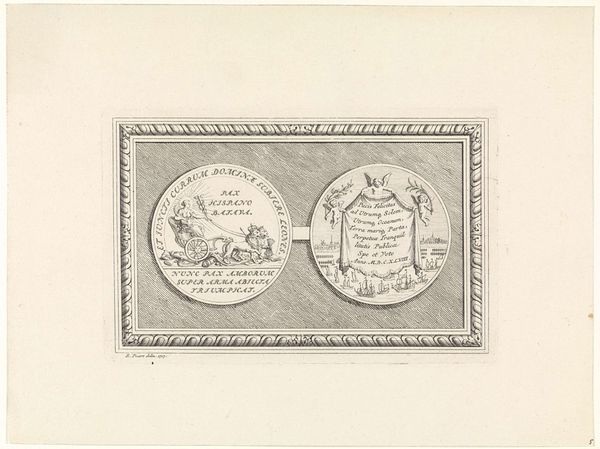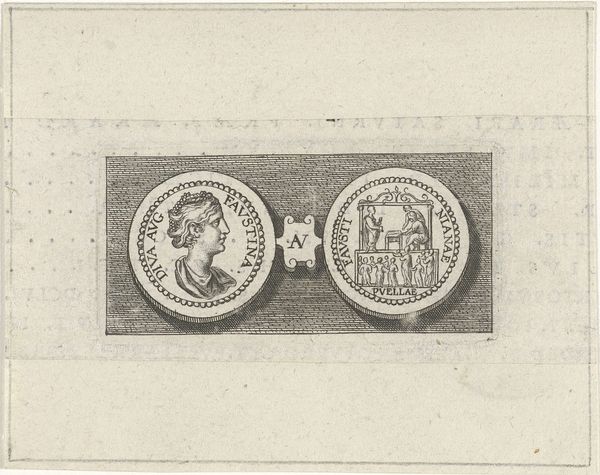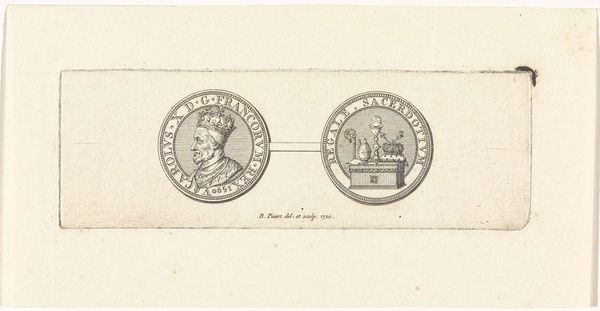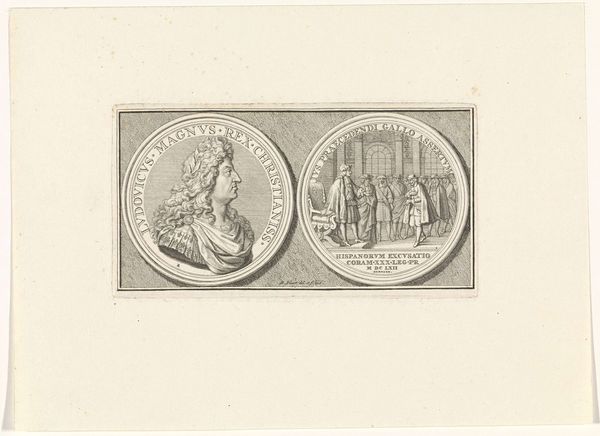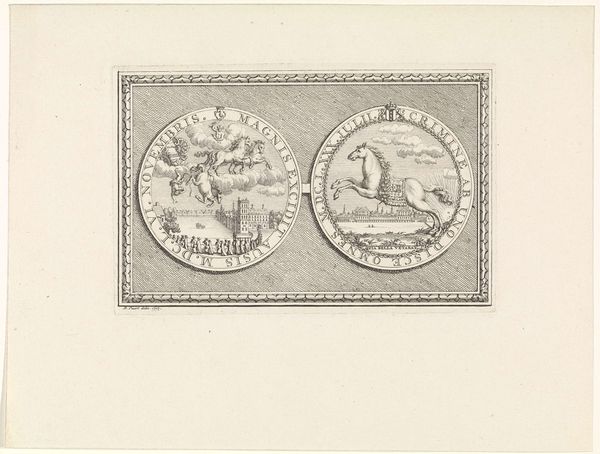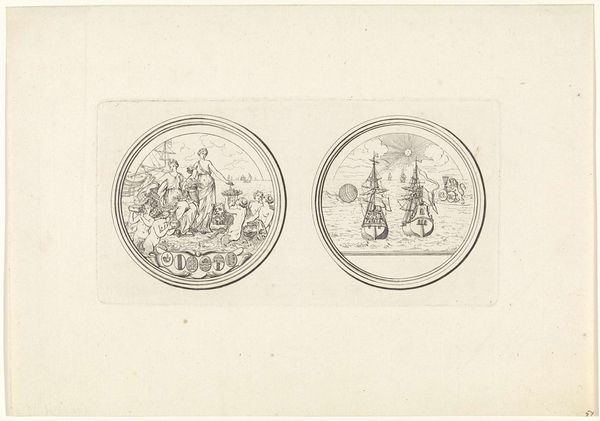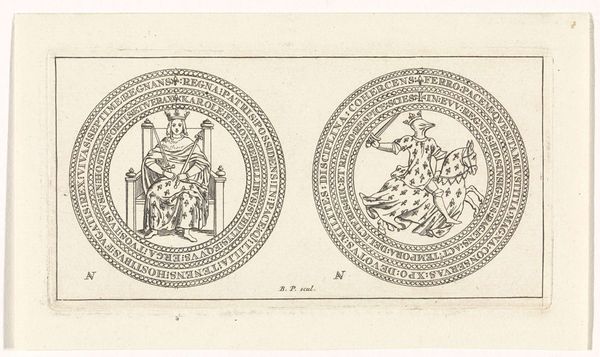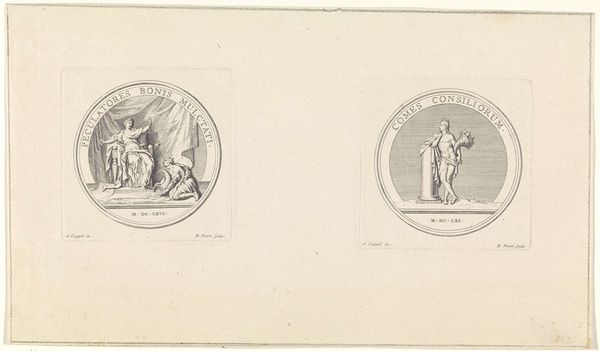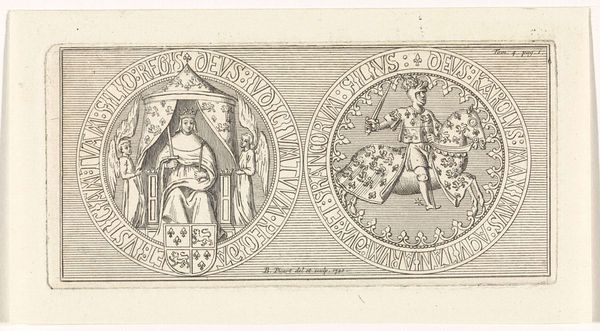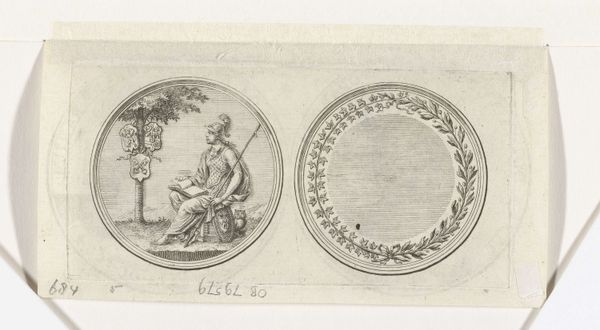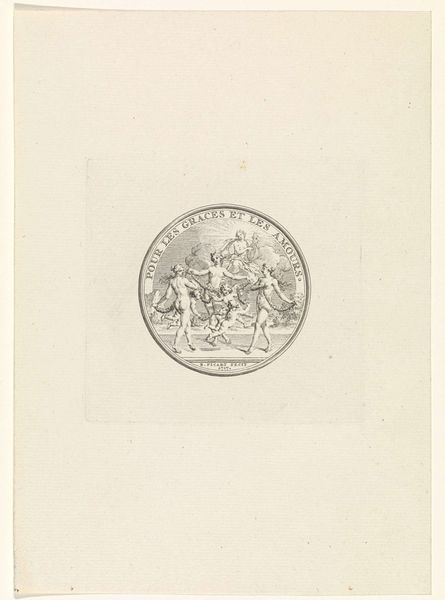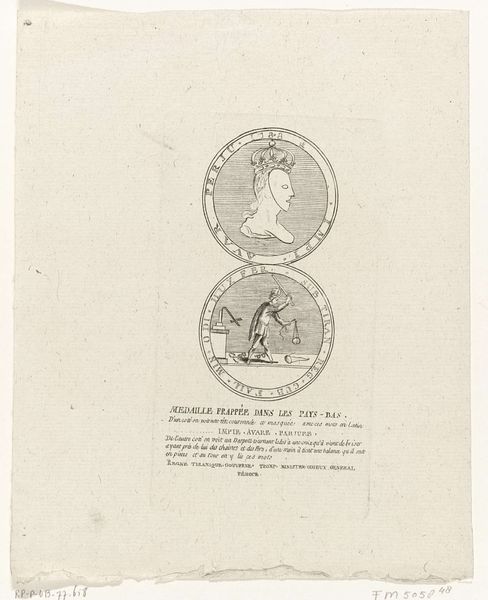
print, engraving
#
portrait
#
comic strip sketch
#
baroque
#
pen drawing
# print
#
pen illustration
#
pen sketch
#
old engraving style
#
ink line art
#
personal sketchbook
#
pen-ink sketch
#
pen work
#
sketchbook drawing
#
history-painting
#
engraving
Dimensions: height 73 mm, width 139 mm
Copyright: Rijks Museum: Open Domain
Editor: Here we have Bernard Picart’s 1718 engraving, "Penning met het portret van Karel IX van Frankrijk," housed at the Rijksmuseum. It depicts two coin-like images, and it’s fascinating how much detail he manages in such a small space! What's your interpretation of this work, given its historical context? Curator: This piece invites us to consider power, representation, and the ways history is mediated. Picart, in recreating these medals, isn’t just making copies. He is actively participating in a dialogue with history. Think about Charles IX - remembered largely for his role in the St. Bartholomew's Day Massacre. How does the act of portraying him on a commemorative medal, then reproducing that image later, impact our understanding of this controversial figure? What narrative is being reinforced, and whose voices are being excluded? Editor: That's a chilling consideration. The piece feels celebratory, almost… idealized. It ignores a huge part of his reign, doesn’t it? Curator: Exactly. Consider the broader political context. In 1718, what function does this type of imagery serve? The Baroque era often saw rulers using art to legitimize and solidify their power. Reproducing this medal potentially reaffirms certain power structures and obscures more complex, uncomfortable histories. How can we, as viewers, critically engage with such representations to uncover these hidden layers? Editor: I hadn’t thought about the act of reproducing the image itself as a form of commentary or manipulation. Curator: Precisely. It’s a reminder that historical images are never neutral; they’re always implicated in power dynamics. And even re-interpreting them in different eras is an important part of the process of uncovering those dynamics and histories. Editor: That's given me a lot to think about regarding the role of art in shaping our perceptions of history. Thanks for your insight. Curator: And thank you, your willingness to engage is essential. It's by asking questions that we begin to disrupt singular narratives.
Comments
No comments
Be the first to comment and join the conversation on the ultimate creative platform.
